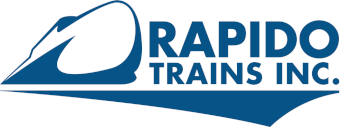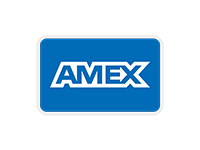By Andrew Castle
The M-420 was a four-axle, 2,000 horsepower freight locomotive produced by Montreal Locomotive Works (MLW) from 1973 to 1977. Canadian National was the largest customer making three orders for a total of 80 units. An additional 16 units were built for the British Columbia Railway including eight cabless M-420B units and two M-420s went to South America. Other variants were the M-420R built for the Providence and Worcester Railroad and M-424 built for several Mexican roads.
The M-420 was powered by an ALCO 12V-251-C3 prime mover producing 2000 horsepower which turned a GTA17PB1 alternator. Most were delivered with a fuel capacity of 2,500 Imperial gallons and rode on MLW’s unique Zero Weight Transfer (ZWT) trucks. These trucks were designed to decrease wheel slip by limiting weight transfer within the truck caused by traction motor torque. The design created a very rigid truck which gave crews a rougher ride than other four-axle locomotives. Each axle featured a wheel-slip detector on the left end with associated cables running along the sideframe.
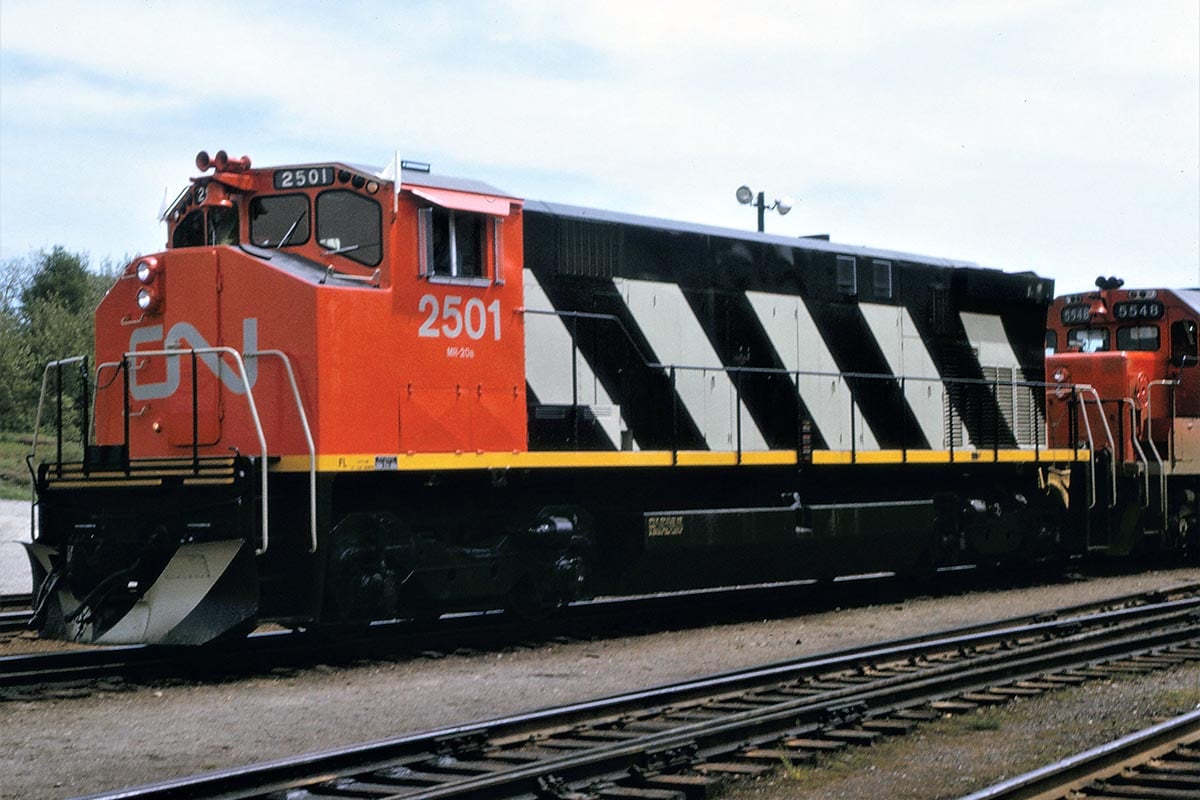
CN 2501 at Capreol, Ontario on June 3, 1973. Photo by Don Jaworski
The M-420 locomotives can be distinguished by their boxy wide-nose cabs, unique ZWT trucks, and tall frames with a bottom profile that follows the shape of the trucks.
Some publications add a W suffix on the end of the M-420 designation calling it either M-420W or M-420(W) to signify the Wide-nose cab. This was never a MLW designation, they simply called it the M-420 (with a hyphen).
CN’s M-420 locomotives spent most of their life working in eastern Canada. When first delivered they were commonly used on mainline freights and could be found working between Halifax NS and Windsor ON as well as north to Senneterre QC and south to Portland ME and St. Albans VT. Later in life they were demoted to secondary freight, branchline, and local freight service mainly in Quebec, New Brunswick, and Nova Scotia.
The units were originally assigned to both Taschereau Yard in Montreal QC and Gordon Yard in Moncton NB for maintenance. By the early 1990s all were assigned to Moncton. When the Gordon Yard diesel shop closed in July 1997 the remaining M-420s were reassigned to MacMillan Yard in Toronto until their retirement a short time later.
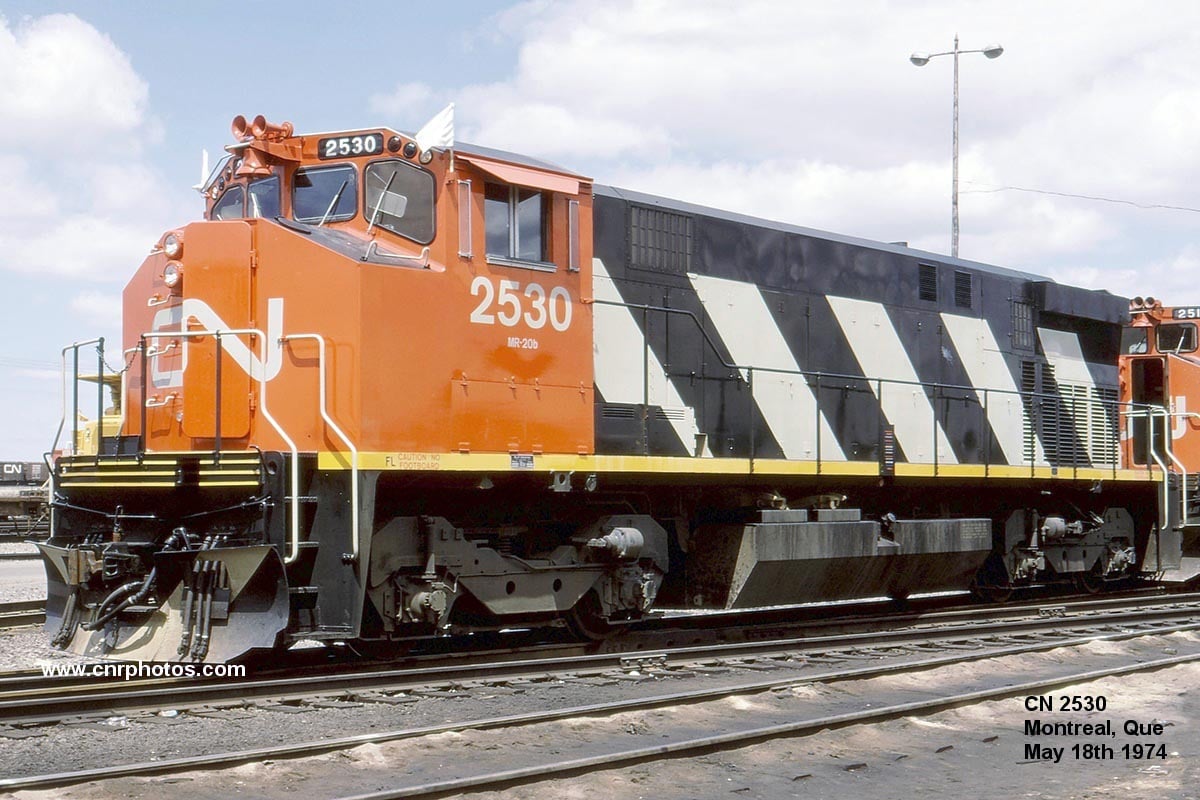
CN 2530 at Montréal, Québec on May 18th, 1973. Photo by Micheal McIlwane, courtesy of CNRphotos.com
First of the Safety Cabs
During the early 1970s Canadian National worked to design a new “Comfort Cab” or “Safety Cab”. The goal was to provide greater protection to crews in the event of a front-end collision and increase crew comfort with better insulation, heat, and seating. In 1973 both GMDD and MLW produced new locomotives to meet CN’s specifications and while GMDD’s GP38-2 number 5560 wore banners celebrating it being the “First Locomotive With New Safety Cab Design” that honour actually goes to MLW M-420 2501 which was delivered several weeks earlier.
Sub-class Differences
CN made three different orders for the M-420. The first 30 were numbered 2500 to 2529 and given CN class MR-20a (MLW built, Road freight locomotive, 2000 horsepower, a for first order of this class), and delivered in 1973. The second order of 30 units were numbered 2530 to 2559, given class MR-20b, and delivered in 1974. The final order was for 20 units numbered 2560 to 2579, given class MR-20c, and delivered in 1976.
The biggest visual difference between CN’s first order of M-420s and the following orders was the size of the fuel tank. The fuel tank on the MR-20a units was longer and filled most of the space between the trucks while the MR-20b and MR-20c models had a shorter fuel tank. The two lengths of fuel tanks used different bracket designs to mount the fuel tank to the locomotive frame. Interestingly the capacity of both longer and shorter fuel tanks is the same at 2,500 Imperial gallons.
The 30 units of the MR-20a class were delivered with no rear numberboards and roadnumbers painted on the end of the long hood. Numberboards were added to the rear between 1974 and 1976 and the MR-20b and MR-20c units were delivered with rear numberboards from the factory.
Behind the cab on the right side of the hood there is an electrical cabinet access door. On MR-20a and MR-20b units this door has louvers covering the full height of the door. On the MR-20c units the door has large rectangular openings rather than louvers.
On the engineers side of the MR-20a units there is a single rectangular equipment door under the cab and two smaller doors under the conductors side. The MR-20b and MR-20c units have two smaller doors on both sides of the cab.
The MR-20a and MR-20b classes of M-420 appear to have been built with two radiator panels on the top of the radiator section. The forward third of the radiator section had the same profile as the top of the engine compartment. Around 1981 the forward section was replaced with a third radiator panel on all units which in turn required a longer walkway over the radiator compartment.
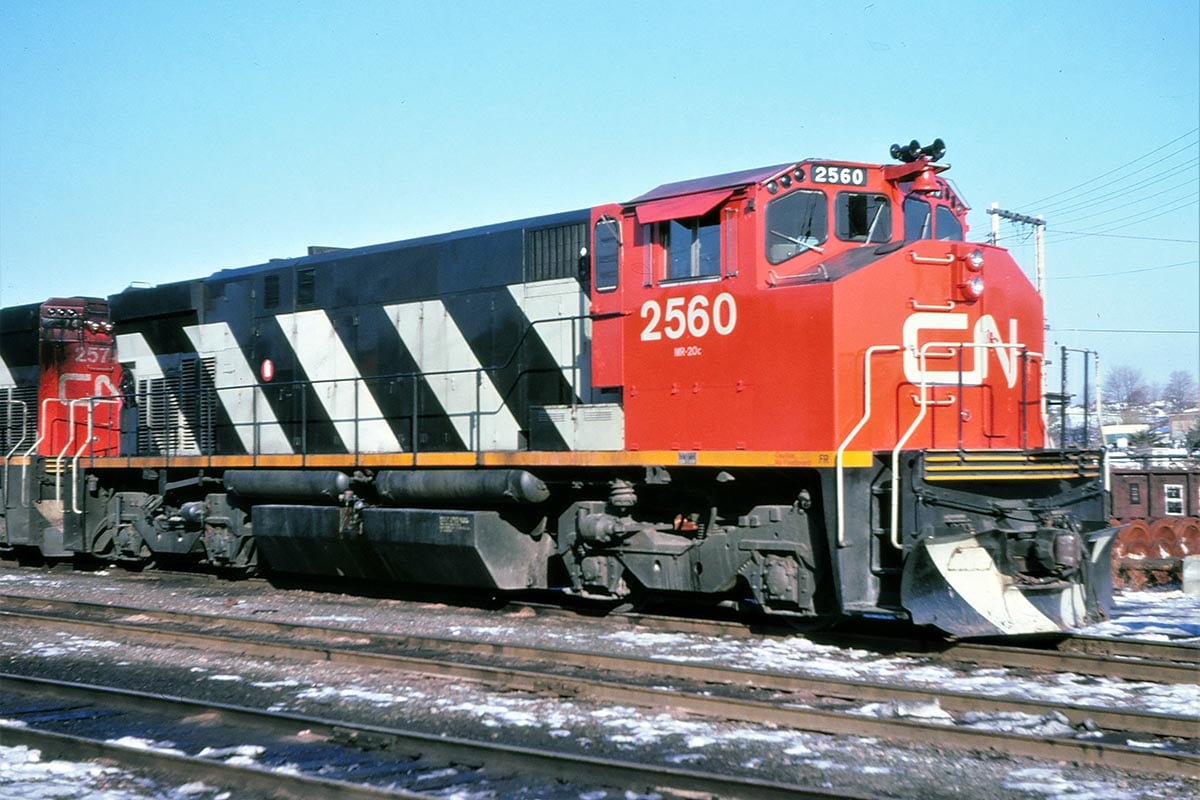
CN 2560 in Halifax, Nova Scotia on December 16th, 1978. Photo by Glenn Courtney courtesy of Don Jaworski
The MR-20c units have two additional features that were not seen on the first two orders. First is an angled tank attached to the frame behind the fuel tank, perhaps a waste retention tank. Second is the MR-20c units have a larger exhaust stack than other M-420s. CN management requested that MLW equip their third order of M-420s with the same turbocharger as the C-630M which resulted in the units having the same larger exhaust stack as seen on the C-630M and M-636.
2500s to 3500s
By 1986 CN’s fleet of RS-18s was getting worn out and in need of replacement. The M-420s and (HR-412s) were no longer prime mainline power so the decision was made to downgrade them to work on local freights and on secondary trackage. The plan was to modify the locomotives to hold less fuel and sand so their weight was closer to the RS-18s they were replacing.
Modifications began in October 1986 and the last unit was done in December 1987. Special extensions were added to the fuel adapters to reduce capacity from 2,500 Imperial gallons to approximately 1,000 gallons and adapters were added to the sand fill pipes to reduce capacity by 25%. Basic wrap-around pilots were added to the rear of the MR-20a and MR-20b units, the MR-20c units (and HR-412s) were equipped with rear wrap-around pilots from the factory. As the locomotives were modified the first digit of their number was changed from 2 to 3 moving the whole series to the 3500s. Some units have an obvious rectangular patch of a different shade of red paint around the 3 on the cab sides.
During the summer of 1994 all M-420s were returned to their original weight and fuel capacity but were kept in the 3500 number series.
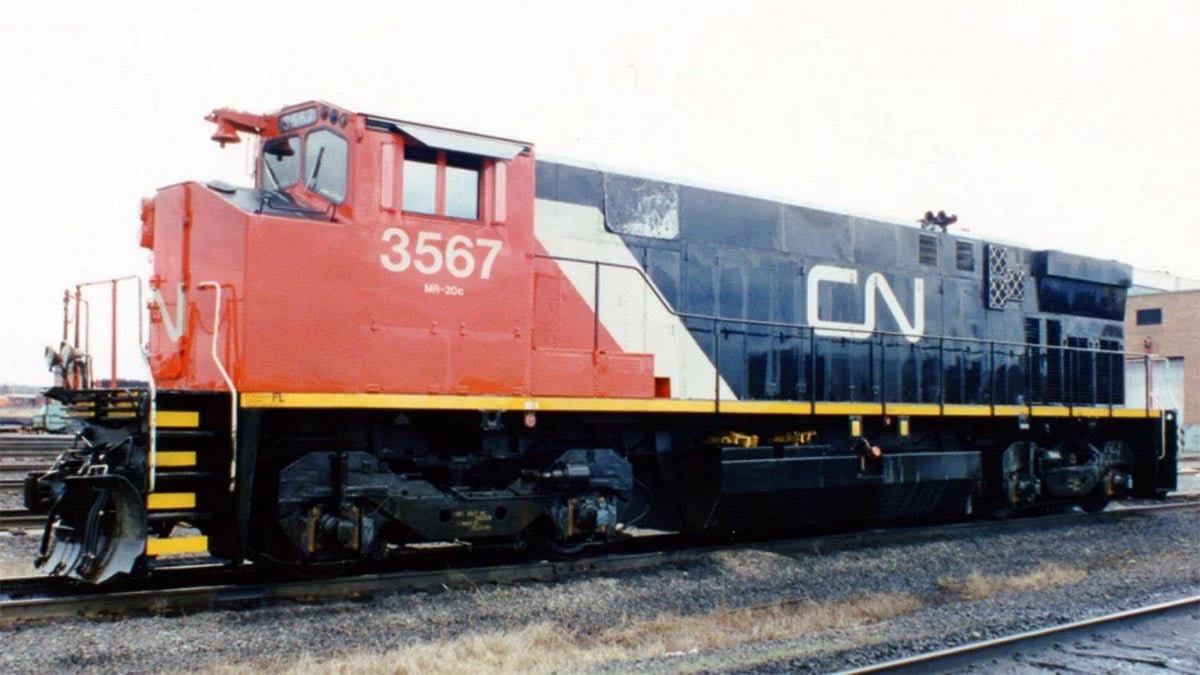
CN 3567 in Moncton, N.B. by Don Jaworski
Upgrades
During their time in service CN made several modifications and upgrades to the M-420 fleet. Small external modifications included adding two grab irons to the top of the front plows by 1980. Bigger changes included relocating horns from the front of the cab to the long hood near the exhaust stack and adding associated air piping starting in October 1987, and adding ditch lights starting in March 1992. At some point all M-420s got all-weather bay windows on the engineer’s side of the cab.
The radiator shutters on the M-420s were known to come apart or ice up so around 1990 CN replaced the shutters with a heavy mesh grating. This grating was strong enough to walk on so the walkway over the radiator did not always get replaced.
Between 1991 and 1996 about half of the M-420 fleet received GMD-style “knuckle buster” door latches on the hood doors on the long hood.
When cabooses were eliminated from CN mainline freight trains in the early 1990s the M-420 fleet received a small Sinclair-style antenna on the left front of the cab roof as part of the system for communicating with the SBU (sense and braking unit) on the rear of the train.
Around 1990 the M-420s received three square filters on each side of the hood just ahead of the radiator compartment. On most units the filters were arranged with two filters one above the other and the third filter just behind and slightly below the middle of the other two filters. There were some exceptions with 3501 and 3525 getting all three filters in a horizontal row and 3546 getting four filters forming a square.
Snowplow Service Modifications
During 1992 a number of M-420s were modified for snowplow duty. When plowing snow the air intakes behind the cab often iced up, to eliminate this problem new openings were cut and filters installed between the engine compartment and traction motor fan room. Sheet metal was installed over the air intake openings every fall with air for the traction motors and electrical cabinet now drawn from the engine compartment.
After switching to composite brake shoes in the late 1980s crews discovered if the brake shoes were not kept warm they provided very little friction for stopping. During the summer of 1990 the M-420 fleet was equipped with a system where a small amount of brake pressure could be applied all the time keeping the brake shoes warm and ready for use during switching and snowplow operations.
Paint schemes
Not only did CN’s first M-420 order introduce the safety cab, they were also the first units delivered in the red, black, and grey striped paint scheme CN used for the following 19 years. While the units were repainted over the years most retained the same scheme.
Only six of the M-420s were repainted into newer CN paint schemes. During late 1992 or early 1993 both 3536 and 3567 were repainted into the CN North America scheme which called for units under 3,000 horsepower to get an 8’ wide noodle on the sides of the long hood but no North America map. 3536 had 12’ high numbers on the side of the cab while 3567 had the more common 15” high numbers.
In 1995 the CN North America scheme was replaced by a simplified scheme featuring a 10’ noodle on the hood sides and no map. Four units were painted in this scheme during the fall of 1995. CN 3502, 3551, 3561, and 3576 all had the 10’ noodle and 15” high cab numbers.
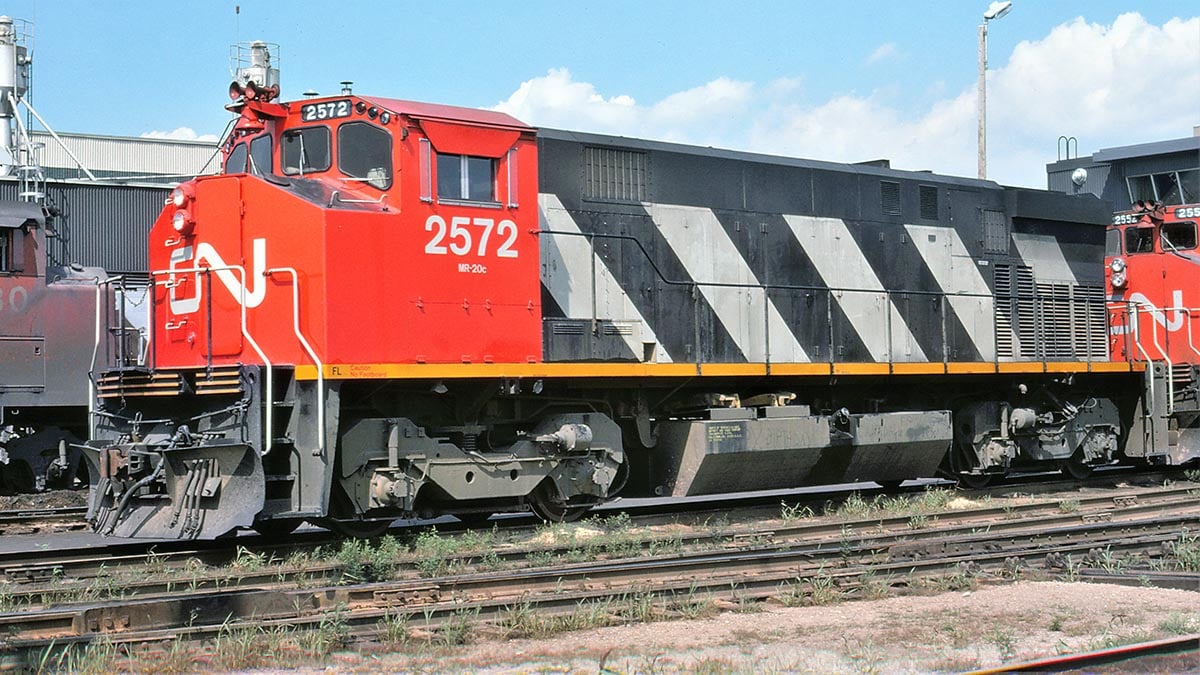
CN 2572 at MacMillan Yard just outside of Toronto, Ontario. Photo by Don Jaworski
Due to a painting error some if not all units in the MR-20c order delivered in 1977 had the cab roof painted red instead of the standard black. There is photographic evidence of CN 2560, 2562, 2566, 2567, 2570, 2572, 2574, and 2575 all having red cab roofs up until some point between 1980 and 1983. Photos after 1983 show most of these units the cab roof repainted black.
An interesting side note is photos show CN 2564 with a black cab roof through the 1980s then in a photo taken in the early 1990s the unit has been renumbered to 3564 and the black paint is peeling off the cab roof and red paint is showing through. A third photograph shows the unit being scrapped in Moncton NB in the summer of 1997 and it appears to have a full red cab roof!
Ice Storm 1998
During January 1998 areas of eastern Canada and the northeastern United States were hit by a severe winter storm. The worst hit areas in southern Quebec saw hours of freezing rain which deposited up to two inches of ice. The weight of the ice damaged power lines and transmission towers leaving over 4 million people without electricity.
Two of CN’s M-420 locomotives were used as emergency generators until electricity could be restored. CN 3502 was lifted off the tracks in Boucherville and moved a short distance down a street under its own power. It was then used to provide electricity to several municipal buildings. CN 3508 was lifted off the rails at the same location in Boucherville with plans to provide electricity to a shelter in a local school but it was never moved to the school and stayed close to the tracks near 3508.
Retirement and Second-hand Owners
During their years with CN five M-420s were retired due to wreck damage and one was retired due to a fire resulting in a bent frame.
The M-420s were among the last of CN’s MLW-built locomotives to be retired. While numerous units were cannibalized and scrapped in Moncton NB during 1997 approximately half of the fleet was sold serviceable in early 1998.
After being sold by CN many M-420s found new homes on shortlines in both Canada and the United States. Second and third-hand owners included Great Western Railway, Hudson Bay Railway, Kelowna Pacific Railway, Lake State Railway, Maine Eastern, Minnesota Commercial Railroad, Morristown and Erie Railroad, New York and Lake Erie Railroad, Ohio Central Railroad, Railink, St. Lawrence and Atlantic Railroad, Southern Manitoba Railway, Southern Railroad of New Jersey, Trillium Railway, and West Tennessee Railroad.
British Columbia Railway
British Columbia Railway became the second railroad to own the M-420 in 1973 with an order of 16 units. BCOL 640 to 647 were regular M-420s with the standard safety cab while BCOL 681 to 688 were designated M-420B and were cabless booster units. The M-420Bs were equipped with radio receiving equipment to work as Locotrol slave units in remote operation.
There were several differences between the BC Rail M-420s and the CN version. The biggest difference was the fuel tank; BCOL units had a smaller fuel tank which was offset closer to the rear truck on the M-420 and the M-420Bs. The BC Rail units were equipped with dynamic brakes and carried different horns and plows. The electrical compartment door on the BC Rail units was the same louvered design as on CN’s first two orders of M-420s.
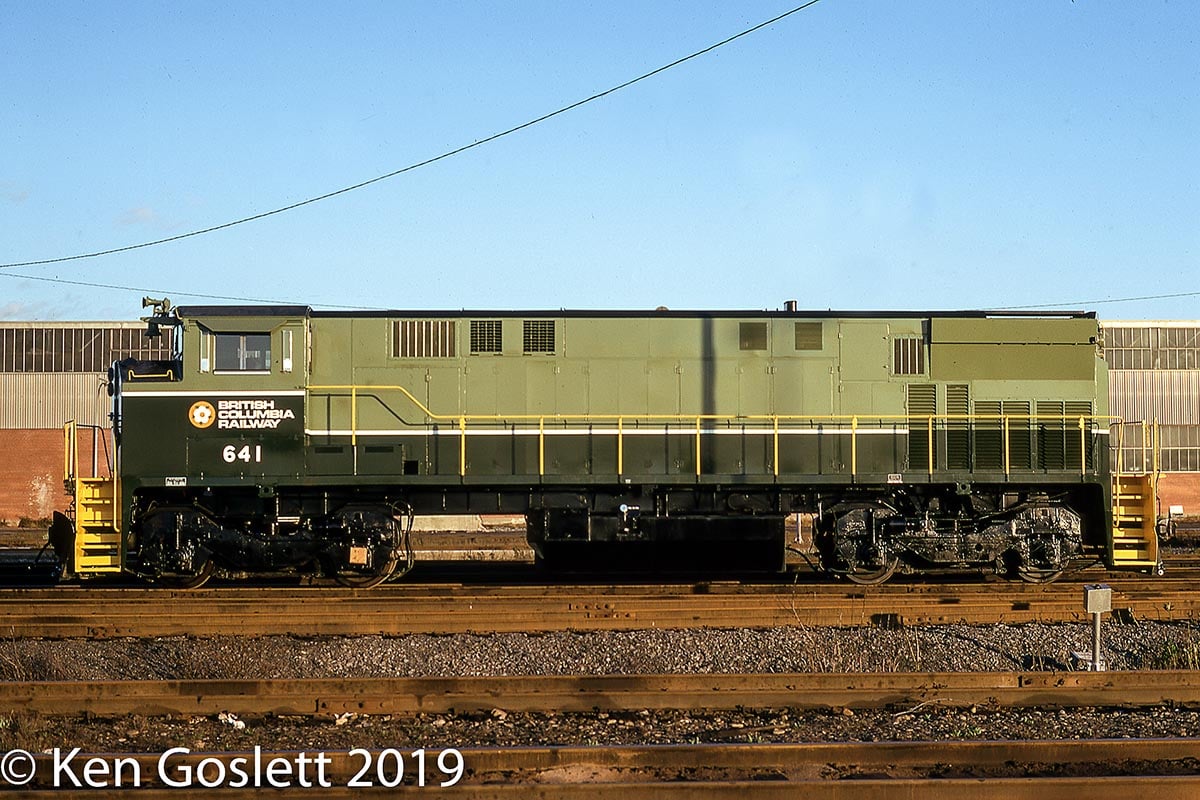
BCR 641 in Montréal, Québec in October, 1973. Photo by Ken Goslett
All of the British Columbia Railway units were delivered in their two-tone green paint scheme and were eventually repainted in the BC Rail red, white, and blue scheme. The eight M-420s had a pair of ditch lights recessed into the front of the short hood. Sometime before 1985 an additional pair of ditch lights normally referred to as “corner lights” were added to the front pilot. Also sometime before 1985 the MLW stepwells were replaced with new stepwells of BC Rail’s own design.
One of the M-420s and three of the M-420B units were wrecked in 1994, two more M-420Bs were wrecked in 1996. Two of the M-420s were sold to the Delaware Lackawanna are now on the Mohawk, Adirondack, and Northern Railroad and four were sold to the Ontario Southland Railway. One M-420 and the remaining three M-420Bs were sold to Omnitrax in 1998.
M-420R
In 1974 and 1975 MLW built five locomotives for the Providence and Worcester Railroad and designated them M-420R. Instead of standard ZWT trucks the P&W units rode on Type B trucks as commonly seen under many older ALCo-designed 4-axle locomotives. The Type B trucks required different truck spacing and a different bolster design than the standard M-420s. The frame on the M-420R has a straight profile like the later HR-412 rather than having the frame rails angled around the trucks as on the standard M-420.
Three of the M-420Rs went to the Iowa Interstate Railroad and then other owners while two went to the Maine Coast Railroad.
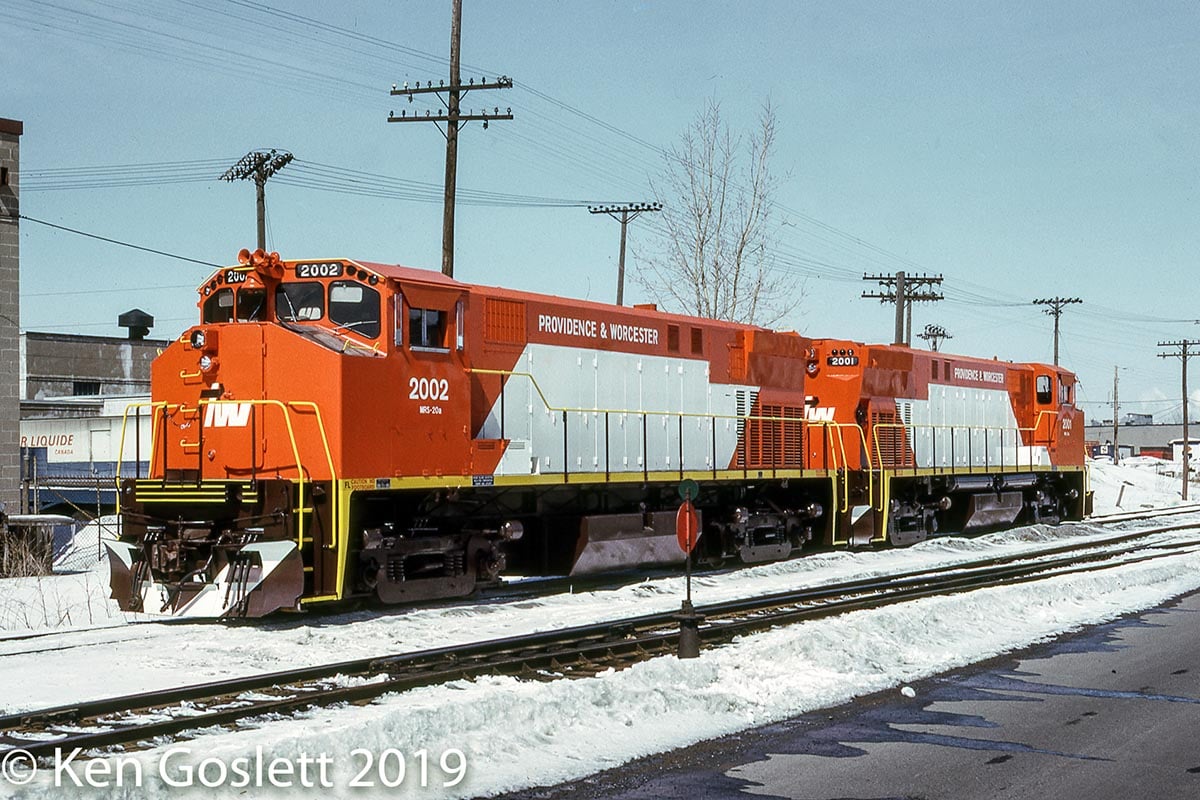
P&W 2002 on delivery in Montréal, Québec in 1974. Photo by Ken Goslett
M-424
The M-424 was a model built by Bombardier for several railroads in Mexico. A total of 72 were built sharing many common features with CN’s M-420 fleet but having dynamic brakes and rated at 2400 horsepower.
M-420TR
The M-420TR was an end-cab locomotive produced for the Roberval and Saguenay in Canada and Ferrocarril del Pacifico in Mexico. While these locomotives share a similar designation to the M-420 they are shorter, have a different long hood, and have little in common with the M-420.
HR-412
In 1975 Quebec’s Bombardier purchased a 59% stake in MLW. After moving MLW design and construction under the Bombardier name the company introduced a new line of freight locomotives. The new “High Reliability” line included the HR-412 (High Reliability, 4-axle, 12-cylinder) which was a follow on to the M-420. CN was the only customer for this model purchasing ten of them in 1981 CN numbered them 3580 to 3589 and designated them class MR-20d after the last group of M-420s.
Externally the HR-412 shares many design characteristics with the M-420 such as the safety cab, pilots, engine compartment, and ZWT trucks. The fuel tank is the same size as on the MR-20b and MR-20c models.
Closer inspection reveals numerous differences including straight frame rails, a revised radiator design, a different profile on the step well corners, exposed truck bearings, and grated walkways along the long hood. All ten HR-412 locomotives were delivered with red cab roofs which were never painted black making this the quickest way to differentiate them from the M-420s.
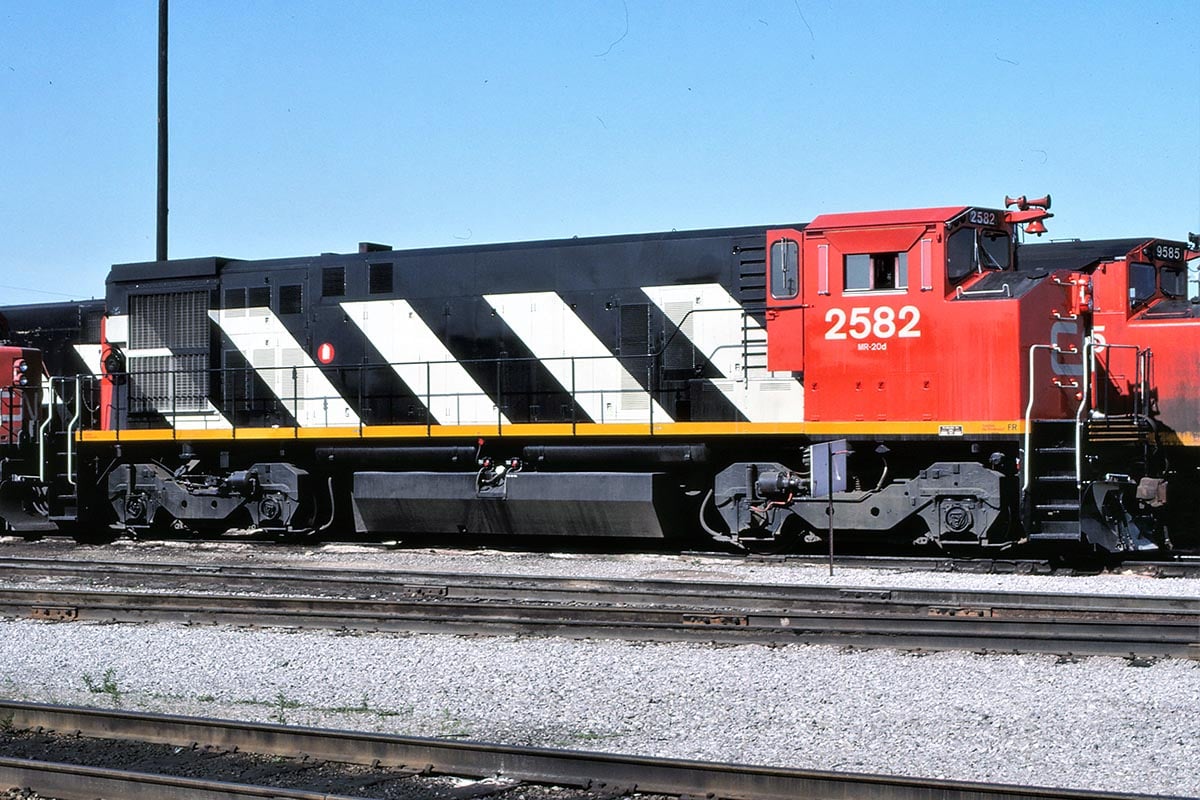
CN 2582 at MacMillan Yard just north of Toronto, Ontario. Photo by Don Jaworski
Additional Reading
Canadian National Railways Diesel Locomotives Volume Two – Courtney/Goslett/Holland
CN Lines Volume 15 Number 3, Canadian National Railways Historical Association
Model Railroader Magazine, July 1997
